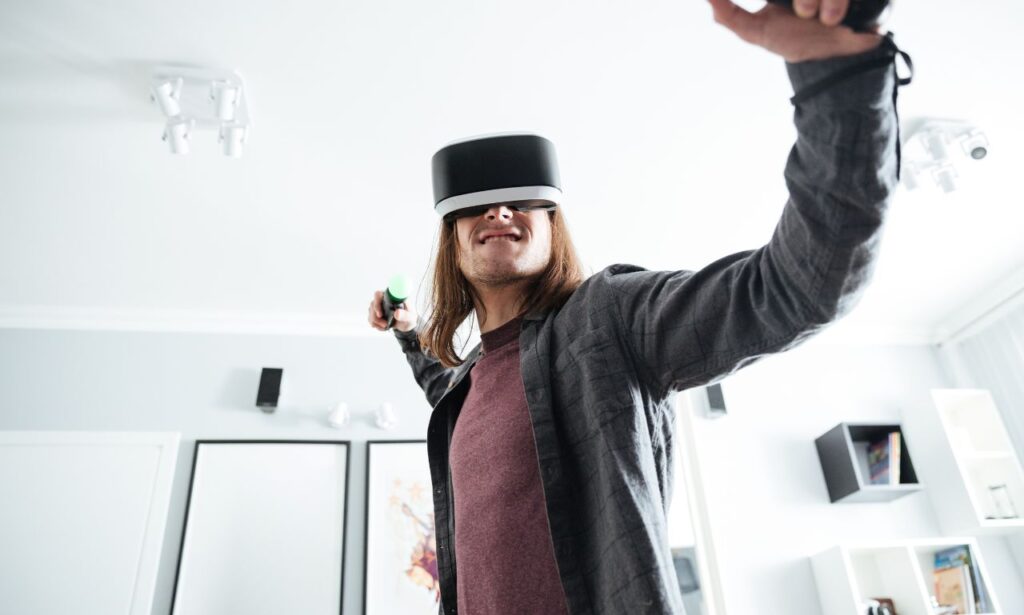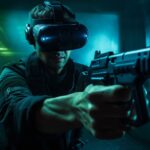In today’s rapidly evolving digital world, where technology seamlessly blends with our daily lives, a new term has emerged—spaietacle. Though not yet found in mainstream dictionaries, this creative fusion of the words “space” and “spectacle” is gaining traction among digital artists, wellness innovators, and immersive experience designers. But what does spaietacle truly mean, and why is it suddenly buzzing across creative and technological platforms?
At its core, spaietacle refers to a multisensory, immersive experience that combines space—physical or virtual—with spectacle. It integrates the awe of visual and auditory effects with interactive environments to engage people on a deep emotional and psychological level. From futuristic wellness retreats to interactive digital art installations, spaietacle is redefining how we perceive and engage with our surroundings.
Understanding the Essence of Spaietacle
Unlike traditional media or environments, which are largely static and observational, a spaietacle is interactive, responsive, and immersive. Picture walking into a room where the walls shift in color and imagery based on your movement, where music synchronizes with your breathing, and where the very floor vibrates to the beat of a narrative soundtrack. You are no longer just a viewer—you’re part of the story.
The term was born from a need to describe these dynamic, emotionally charged environments. It combines the sensory drama of a spectacle with the immersive qualities of a designed space. Spaietacle environments can be digital, physical, or a blend of both, often using virtual reality (VR), augmented reality (AR), spatial audio, and biofeedback systems to respond in real-time to users’ actions.
The Technology Behind Spaietacle Experiences
A successful spaietacle relies on a convergence of cutting-edge technologies:
-
XR (Extended Reality): Includes VR, AR, and mixed reality to create layered immersive experiences.
-
Projection Mapping: Transforms physical surfaces into interactive displays.
-
Spatial Audio: Delivers 3D sound that changes with user movement.
-
Biometric Feedback: Adjusts environments in response to heart rate, gaze, or emotional state.
-
AI and Machine Learning: Personalize user journeys in real time.
This convergence enables environments that are not only reactive but also predictive, anticipating user needs and behaviors to craft deeply engaging, individualized experiences.
Spaietacle in Entertainment and Art
One of the most exciting applications of spaietacle lies in the entertainment sector. Live concerts held in virtual platforms like Fortnite or VRChat are prime examples. These aren’t just streamed events—they’re fully immersive, interactive experiences where the environment morphs in sync with music, audience interaction, and narrative flow.
In digital art, installations by groups like teamLab and Refik Anadol embody the spaietacle ethos. Viewers walk through environments where visuals, sounds, and interactive elements are meticulously choreographed to tell a story or evoke emotion. These spaces are so responsive they often blur the lines between art, technology, and performance.
Wellness and the Rise of Spaietacle Retreats
Wellness is another domain where spaietacle is making waves. High-end spas are no longer just about massages and facials—they’re becoming immersive sanctuaries that integrate light therapy, sound baths, scent diffusion, and interactive visuals. Visitors might lie in floatation tanks under a virtual aurora borealis, accompanied by spatial audio and biometric syncing to their heartbeat.
This blend of healing and sensory design promotes deeper relaxation, emotional release, and even spiritual renewal. In a time where burnout and anxiety are widespread, the spaietacle experience offers an escape not just physically but emotionally and psychologically.
Education and Corporate Applications of Spaietacle
In education, spaietacle introduces a revolutionary method of teaching. Imagine history lessons where students walk through ancient Rome using AR, or biology labs where they explore the human body from within, guided by spatial visuals and AI narration. These immersive experiences foster deeper understanding and retention compared to traditional lectures.
Corporations are also adopting spaietacle environments for team building and collaboration. VR meeting rooms, virtual whiteboards that react to voice commands, and holographic brainstorming sessions are transforming remote work. These innovations promote creativity, reduce fatigue, and deepen engagement.
spectacle in Retail and Brand Experiences
Retailers and marketers are embracing spaietacle to attract and retain customers in competitive landscapes. Flagship stores might feature interactive walls, scent-based branding, or VR showrooms where customers design products in real time. These environments not only showcase products but also tell brand stories, creating emotional connections that go beyond transactional shopping.
Digital pop-up events and virtual product launches are leveraging spaietacle elements to deliver engaging, shareable content across social media platforms. The result is stronger customer loyalty and memorable brand experiences.
Challenges and Ethical Considerations
Despite its immense potential, the spaietacle movement is not without challenges:
-
High Costs: Creating immersive environments is resource-intensive, requiring specialized technology, space, and multidisciplinary teams.
-
Accessibility: Ensuring spaietacles are inclusive for people with disabilities is crucial.
-
Cultural Sensitivity: As storytelling becomes more immersive, respecting cultural narratives and representations is essential.
-
Privacy: Biometric and behavioral tracking, while powerful for personalization, raises concerns about data collection and usage.
Addressing these challenges is vital to ensure the responsible evolution of the spaietacle experience.
The Emotional Impact of spectacle
What truly sets spaietacle apart is its power to evoke emotion. Traditional content delivery methods often struggle to create lasting impressions. In contrast, immersive environments that engage multiple senses simultaneously tend to leave a deeper emotional footprint. Whether joy, awe, nostalgia, or introspection, these emotions foster meaningful experiences that people remember—and share.
Emotional engagement also translates to better mental wellness. A carefully designed spaietacle environment can reduce stress, improve mood, and even help in therapeutic settings such as PTSD treatment or trauma healing through safe sensory stimulation.
What’s Next for Spaietacle?
As the technology becomes more affordable and accessible, we can expect spaietacle to enter everyday life. Potential developments include:
-
Portable spaietacle kits for homes, delivering immersive relaxation or learning.
-
AI-powered storytelling engines that adapt narrative based on the user’s mood and interaction.
-
Public installations that bring art, wellness, and storytelling to urban environments.
-
Hybrid festivals combining live and virtual elements for global audiences.
These developments signal a shift toward a more human-centered approach to technology—one that prioritizes experience, emotion, and engagement over screen time and passive consumption.
Conclusion
Spaietacle isn’t just a flashy buzzword—it’s a reflection of where we’re heading as humans in a digitally enhanced world. It merges our primal love for stories and emotions with advanced technology, creating environments that captivate our senses, heal our minds, and expand our understanding.






